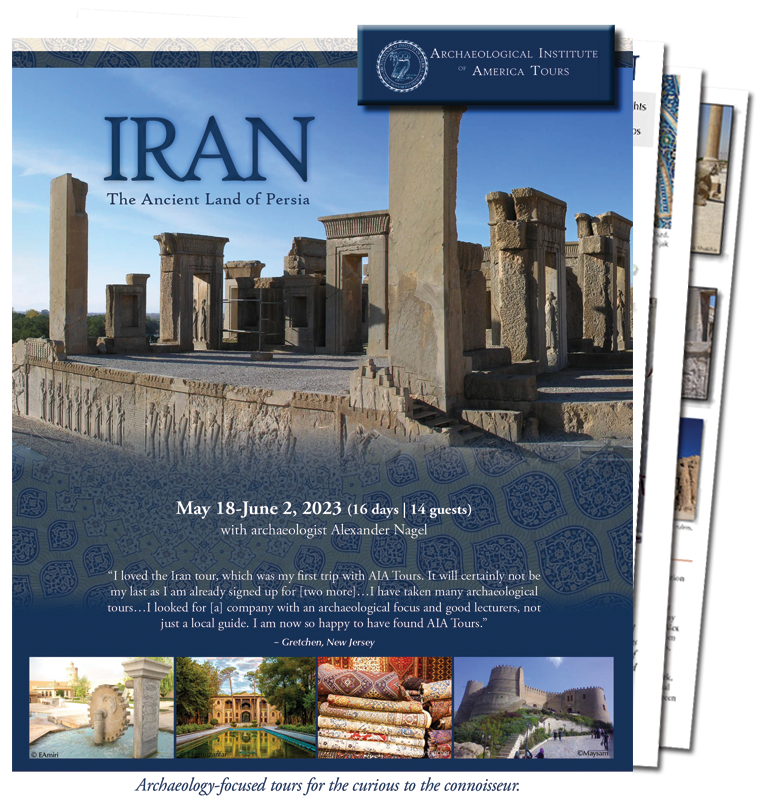This tour has been cancelled for the 2023 departure, please contact us at aia@studytours.org or call 800-748-6262 for more information about future tours in this region.
Travel and learn with engaging AIA study leader Alexander Nagel, an expert in the archaeology of Iran. Enjoy the knowledge and services of an Iranian guide/professional tour manager who will attend to all of the travel logistics, freeing you to fully enjoy and experience your surroundings. Spend two full days in the capital city of Tehran for an introduction to Iran’s archaeology, culture, contemporary art, and history, with visits to several excellent museums, art galleries, and monuments. With another two full days in Isfahan, perhaps Iran’s most splendid city, with glittering, tiled domes that tower above wide, shaded avenues and terraced gardens.
Experience twelve UNESCO World Heritage Sites:
- Afternoon and morning visits to the astounding site of Persepolis
- Soltaniye’s 14th-century mausoleum of Mongol Sultan Oljeitu Khodabande
- Bisotun, with a 6th-century bas-relief surrounded by over a thousand lines of inscriptions in Elamite, Babylonian, and Old Persian
- Tehran’s lavish, 18th-century Golestan Palace
- The Sasanian religious center of Takht-e Soleiman (Solomon’s Throne)
- Susa’s Ardeshir’s Palace and archaeological mounds, whose layers date from the 5th millennium B.C. to the 13th century A.D.
- The Shushtar Historical Hydraulic System, an irrigation system that was begun by Darius the Great in the 5th century B.C. and completed by the Romans in the 3rd century A.D.
- Isfahan’s immense Meidan Emam (Royal Square) and Masjed-e Jame, one of the world’s greatest mosques
- Choga Zanbil, a 13th-century B.C. Elamite complex with a ziggurat
- Pasargadae, the location of the first Achaemenid capital, with the tomb of Cyrus II and the ruins of gardens, palaces, and altars
- Yazd’s historic center and its traditional, underground irrigation channels (qanats)
Enjoy delicious cuisine, which emphasizes fresh herbs, fruits, and vegetables. This tour is limited to just 14 guests, reserve your space today.
Tour Prices per person (14 nights)
Per person, double occupancy.
11-14 participants $8,545
8-10 participants $8,945
Single supplement $1,395
Single room supplement will be charged when requested or required (limited availability). With fewer than 8 participants, a small group surcharge may be added.
To reserve your space using the online form, click here.
For reservations or questions, please email us at aia@studytours.org (and include your full name) or call us toll-free at (800) 748-6262 (toll: 603-756-2884). To reserve your space using the online form, click here.
